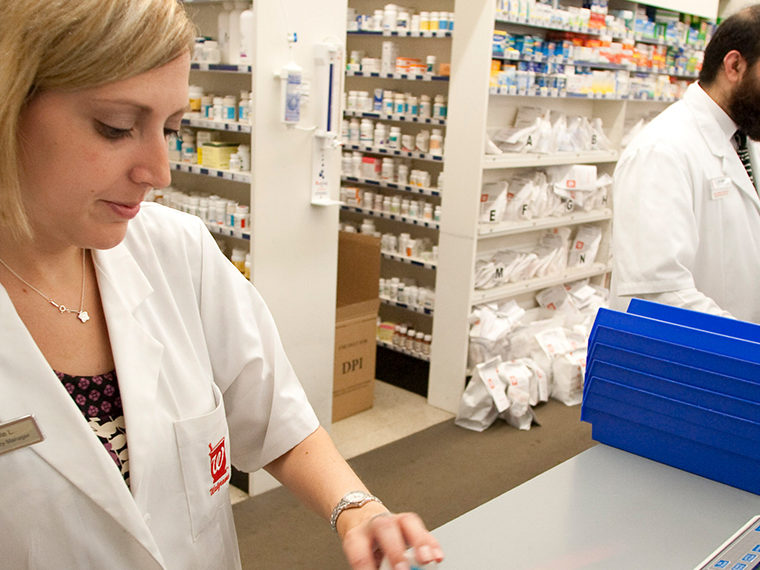A model separates potential profits or losses for hospital, doctors and other health care providers when insurer pays in lump sum
Reimbursement programs that pay health care providers as teams, rather than as individual service providers, often are good for insurers and patients. But are these “bundled payments” good for the hospitals, doctors, labs, therapists and other professionals that provide the care?
David C. Johnson of Blue Cross NC, UCLA’s Fernanda Bravo, Eric Kwok, Christine Ahn, Mark S. Litwin and Christopher S. Saigal, and IQVIA’s Artem Pashchinskiy offer a way for individual providers to find out. Their model estimates each provider’s potential profits or losses for a single episode of care under Medicare’s bundled payment plan. Medicare already covers joint replacements and some other surgeries with bundled payments, and other insurers are joining its push to cover more procedures this way.
The research model deals with financial uncertainties that have made many health care providers nervous about signing on for bundled payments, explains Bravo of UCLA Anderson. Bundled payments require payers and providers to share profits and losses when overall costs for an episode such as a cardiac bypass surgery are over or under budget. While research has found lower care costs overall and quicker patient recoveries with some bundled payments, the financial implications for practitioners are less clear.
Opt In to the Review Monthly Email Update.
In a working paper, the authors clarify illusive variables, such as the actual cost of care, that have made earnings and risk projections difficult for practitioners. Hospitals, doctors and other providers splitting the payment can see the best and worst case pay scenarios for each episode, as well as estimate how gains and losses will balance out over time. The calculations put worries about risk into perspective, Bravo says. “You get an understanding of the probability of having a loss.”
The model also helps care teams experiment on paper with cost-cutting measures before trying them out on patients. A surgeon, for example, can see how much more money she would get individually if the team ordered fewer pre- or post-op tests. The Journal of Urology recently published part of the study that found reducing pre-op MRIs and some patient consultations for prostatectomies resulted in big financial gains for the insurer and providers.
Work Now, Set Fee Later
If you had a knee replacement a decade ago, you likely received multiple bills from a half dozen or more providers, ranging from labs, imaging and home health care workers to surgeons, anesthesiologists, physical therapists and the hospital. Medicare and other insurers paid each provider a predetermined fee for each service.
With a bundled payment, doctors don’t know how much they will earn for their services until months after the work is done. The health care team gets a lump sum to spend on whatever medical services you need, from the date of your pre-op lab work until about 90 days post surgery.
The team shares bonus pay with the insurer if your bills for the procedure and recovery are lower than the payment. If you were a particularly expensive patient — perhaps complications required more hospital time than usual — there’s much less money to go around. Over time, most teams naturally will get bonuses for some patients and less money, or even losses, on others.
Hospitals, doctors and other providers want to know how their long-term earnings under this cost-sharing reimbursement plan will compare to their past fee-for-service earnings. But that calculation is difficult, in part because the true cost of a knee replacement (or other procedure) within institutions isn’t well understood, Bravo explains.
Some studies have used Medicare fee-for-service numbers to estimate these costs, but the hospital in charge of distributing the payments may have negotiated different fees with its team members. Distribution formulas also differ between institutions in other details, such as how losses are shared between team members.
The researchers used a case study of radical prostatectomies at a teaching hospital to build a model that quantifies the costs and accounts for other variables. The surgery is the standard of care for prostate cancer, the most common cancer among men. The team looked at clinical and financial data for each patient in 2016, from the time they were referred for surgery until 90 days after the operation.
By customizing the variables, the model can simulate profit margins for providers in other types of episodes, at any institution. Results can be scaled to understand how changes in the formulas, such as adjustments to stop-loss levels, affect long-term income for the providers.
Trial Runs for Cost-Cutting Measures
Bundled payments appear to be furthering Medicare’s underlying goal: to cut health care costs while keeping patients as healthy as possible. The entire medical team gets richer by eliminating unnecessary testing and treatment, as long as the patient gets the services he needs. (Poor patient outcomes are usually expensive.)
But it’s not always clear whether a specific cost-cutting measure will be worth the price and disruption of implementing, Bravo explains. The model can project how payouts change when one cost within the formula changes.
In the prostatectomy study, the researchers found that two costs — pre-op MRIs, and pre- and post-surgical counseling visits — substantially decreased profit margins even though they were very small contributors to overall costs. There is little empirical evidence that these services, ordered routinely, are beneficial, the study states.
Ordering pre-op MRIs for 33% of the patients and counseling visits for 66%, as the study group did, reduced provider profit margins by about 22.6%, the researchers found. That earnings hit is almost as large as losses attributed to five especially expensive patients treated during the study period, the authors note.
Featured Faculty
-
Fernanda Bravo
Assistant Professor of Decisions, Operations and Technology Management
-
Eric Kwok
Clinical Implementation Specialist, UCLA Health
-
Christine Ahn
Director, ValU Care Redesign, UCLA Health
-
Mark S. Litwin
Chair, UCLA Department of Urology
-
Christopher E. Saigal
Professor and Vice Chair of Urology, UCLA
About the Research
Johnson, D.C., Bravo, F., Kwok, E., Ahn, C., Pashchinskiy, A., Litwin, M.S., & Saigal, C.S. (2020). Prospective financial modeling for clinical episodes of care: Predicting outcomes and quantifying risk in value-based payment models.
Johnson, D.C., Kwok, E., Ahn, C., Pashchinskiy, A., Laviana, A.A., Golla, V., Rosenthal, J.T., Bravo, F., Litwin, M.S., & Saigal, C.S. (2019). Financial margins for prostate cancer surgery: Quantifying the impact of modifiable cost inputs in an episode based reimbursement model. The Journal of Urology, 202(3), 539–545. doi: 10.1097/JU.0000000000000283






